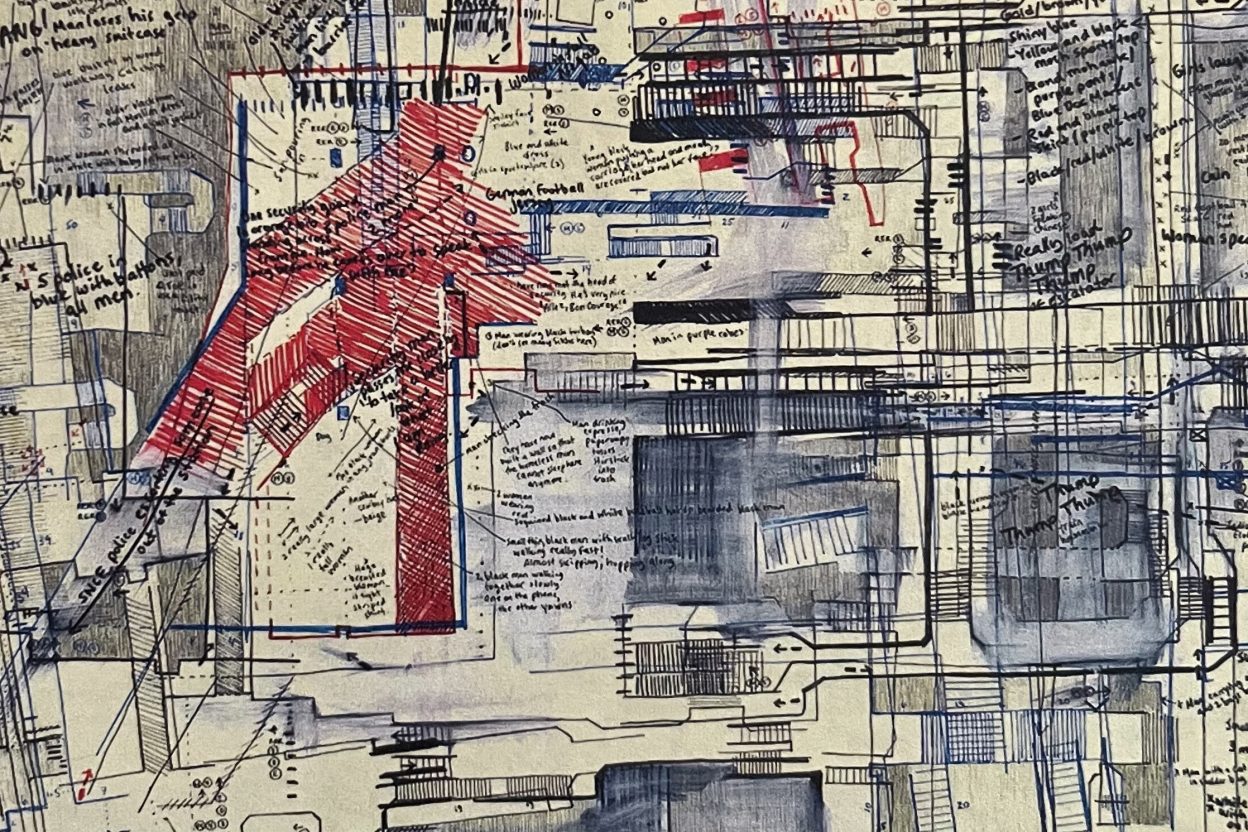OPTION JMA-BE
What do buildings do ?
 Larissa Fassler: Gare du Nord III, detail, 2014/15.
Larissa Fassler: Gare du Nord III, detail, 2014/15.DESCRIPTION
What do buildings do? How do spatial and social qualities relate? And how can architecture and social work contribute to improve both? To address these questions this course brings together students in architecture (JMA Genève, Fribourg and Bern) and social work (HETS Fribourg and BFH-S Bern) to engages in a transdisciplinary enquiry of the social and physical fabric of Biel’s transforming neighbourhoods. We will explore social and spatial relations at the individual and community level and compare the transformation of the built environment with the evolution of the needs and aspirations of inhabitants throughout their lives. We will learn from and with residents and experts of urban development and engage in exploratory fieldwork to better understand the interdependencies of communities and the urban context in which they live. To do so we will combine tools and methods from both disciplines, architecture and social work, to elaborate a vision for a sustainable future development.
LEARNING OBJECTIVES
- Develop a critical and ethical stance in relation to architectural/urban and social issues.
- Recognize the relationship between the configuration of the place/space and the different types of uses and users
- Familiarize with various analysis tools at different scales (walks – interviews – mapping)
- Be able to elaborate the elements of a neighborhood identity
- Be able to understand the differences in quality that exist between neighbourhoods
- Acquire skills to perform interdisciplinary group analysis and synthesis
TEACHING METHOD
The teaching method is based on a collaborative didactic. Selective theoretical inputs from sociology and architecture will provide the necessary background for the exploratory fieldwork, leading to self-organized group work of students from both disciplines. Architects and social workers will share their working methods and tools – spatial analysis, mapping, project sketching and, respectively, participation and interviews – to co-produce and communicate their work. The students will have the opportunity to present their work at the Stadtlabor Biel/Bienne.

